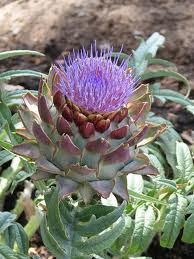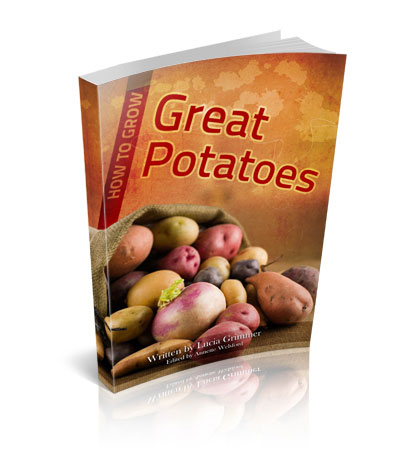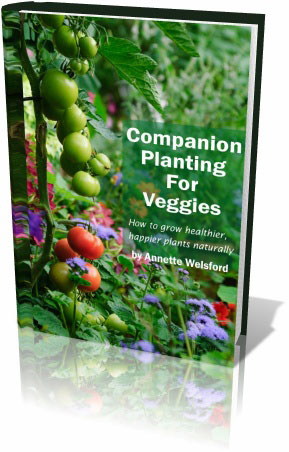The Challenge and Rewards of Growing Globe Artichokes
 |
Absolutely delicious to eat, the globe artichoke is sadly not a favourite in the average home garden. Nevertheless, if you have the space to accommodate a reasonable number of plants, it’s definitely worth giving it a try.
In fact even if you don’t have loads of space, they are such attractive plants, you could grow one row as a border, just for fun.
Globe artichokes are a type of thistle that probably originated in southern Europe and the Mediterranean region, which includes not only Europe, but also the top of Africa, north of the Sahara Desert.
The plant itself is a really pretty green-grey leafed perennial; the “globe” is its fruit. The heart is the most favoured part of the fruit, but the leaves on the head are also scrumptious. You can also eat about 15 cm or 6 inches of the stem of young plants. Only the hairy choke, in the centre of the fruit (or globe), needs to be removed.
There are lots of recipes for cooking artichokes, some of which focus on different sauces into which you dip the artichoke leaves. There are also recipes which rely on stuffing and then baking the globe, or baking the hearts with other vegetables. But the simplest way to cook them is to remove the tough outer leaves (not all the leaves) and then boil the artichoke fruit whole until the stem end is soft. Strain and dribble with a little melted butter (better still garlic butter) and sprinkle with salt and pepper. Then all you do is to remove each leaf and scrape out the tender part at the bottom with your teeth (forget scraping it any other way). Discard any part that is vaguely tough. You’ll find the heart nestling at the bottom of the leaves, at the very top of the stem. Slice it in half and remove the choke before eating.
 |
| The bright purple flower of a mature artichoke plant. |
Whilst globe artichokes will keep growing for about four years, they are notorious for their low-yield in terms of the space they take up in a veggie garden. If you DO have the space, you also need sunlight, soil that has been well-manured, and a site that is well drained. The optimum pH will be 6,5, which is very slightly acidic.
Artichokes are a lot easier and quicker to raise from seedlings (as opposed to seed) or from the rooted suckers of established seedlings rather than older plants. If you do grow from seed, it’ll take five or six months before they’ll be big enough to transplant.
Once your artichokes are established, they won’t need much attention. You will need to remove weeds and dead leaves at the base of the stem (not to be confused with the leaves of the fruit). Mulching is also beneficial, as is side dressing with garden fertilizer or chicken manure.
The artichoke stem should branch out and form a bud at the top of each. Allow the bud to develop and grow, but harvest before it opens and produces flowers.
Tags: growing artichokes












